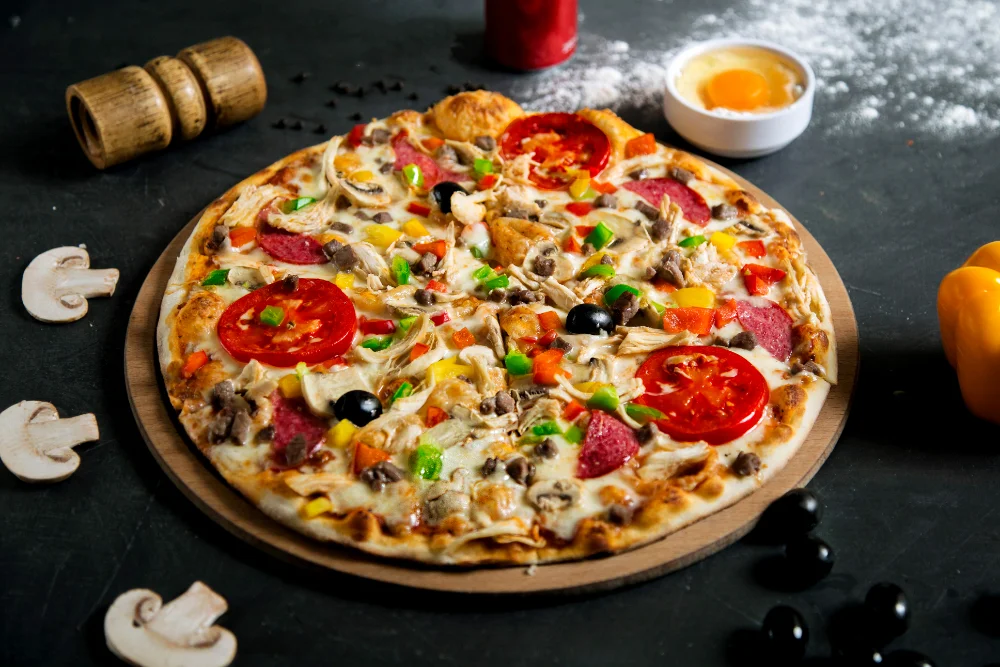Last winter, I was at a friend’s housewarming party when someone posed a question that froze the room—mid-bite into a slice of pepperoni. “Why do we get round pizzas in square boxes?” Everyone chuckled, but no one had an answer. As someone who writes about the everyday logic we take for granted, I knew this was more than just a throwaway query. So, I did what any curious soul would: I dove deep into the peculiar geometry of pizza delivery.
This question isn’t just a fun party debate. It reveals a fascinating intersection of manufacturing efficiency, material science, geometry, and consumer experience. And yes, there’s a good reason why pizza boxes are square—and it has nothing to do with laziness or lack of imagination.
The Geometry of Convenience: Why Square Boxes Make More Sense
At first glance, using a round box for a round pizza seems like the most logical choice. But in the world of packaging and logistics, logic takes on many dimensions—quite literally.
1. Manufacturing Simplicity and Cost-Effectiveness
Square boxes are significantly easier and cheaper to manufacture. They can be cut, folded, and assembled from a single sheet of cardboard with minimal wastage. Factories are already set up with machinery designed for right-angled folds.
A round box, on the other hand, would require more complex shaping, often involving curved cuts, multiple pieces, and extra labour to assemble—not to mention added costs. As per a 2018 report by Packaging World, square boxes reduce manufacturing costs by up to 30% compared to circular alternatives.
2. Storage and Stacking Efficiency
Imagine trying to stack round boxes in the back of a delivery car or on a shelf. It’s a logistical nightmare. Square boxes maximise space and provide a stable base for stacking. They also reduce the risk of shifting during transit, keeping your pizza safer.
When you’re delivering thousands of pizzas during a busy weekend, every inch of cargo space counts. Square boxes create less dead space, and that means better space utilisation and more efficient deliveries.
3. Structural Integrity
Square boxes are more rigid than circular ones. They distribute weight evenly and resist bending better under pressure, which helps prevent your cheesy treasure from being squashed. Corners also add strength to the box, acting like miniature support beams.
A circular box wouldn’t have those reinforced corners, making it more susceptible to collapsing.
So Why Is Pizza Round, Then?
If the square box is the king of convenience, why didn’t the pizza adapt to match?
1. Historical Roots and Culinary Tradition
Pizza, as we know it, originated in Naples in the 18th century. The earliest pizzas were hand-shaped by tossing and spinning the dough in the air—a practice that naturally leads to a circular shape.
The roundness wasn’t just for show. A circle allows for more even cooking. Heat disperses evenly from the centre to the edges, making sure your crust is crisp but not burnt, and your cheese melts uniformly.
According to Chef Enzo Coccia, a Neapolitan pizzaiolo featured in Forbes, “Round pizzas cook more consistently in a wood-fired oven and are easier to slice into equal portions.”
2. Practical Cooking Benefits
A round shape fits better in most ovens, especially the traditional domed brick ovens used in Italian pizzerias. Round pizzas also lend themselves to more symmetrical slicing, ensuring each person gets a fair share of crust, cheese, and toppings.
The Weird But True Alternatives: Square Pizzas in Square Boxes
Of course, some places do make square or rectangular pizzas. Think Sicilian or Detroit-style pizzas—delicious, fluffy, and unapologetically boxy.
But these styles are the exception, not the rule. They’re baked in square pans and often cut into squares or rectangles. And yes, they come in square boxes too—proving that sometimes the form does follow function.
Real-World Innovation: The Round Pizza Box Does Exist
Believe it or not, round pizza boxes do exist. In 2019, Apple filed a patent for a circular pizza container designed for its employee cafeteria. The idea was to reduce heat loss and sogginess during transportation.
You can even find a few niche brands experimenting with circular pizza boxes, often marketed as eco-friendly or artisan. However, these are rare and generally used by smaller outlets with higher margins that can absorb the extra costs.
Environmental Considerations: Are Square Boxes Better for Sustainability?
There’s an ongoing debate about the recyclability of pizza boxes. According to Waste Management, as long as the box isn’t heavily soiled with grease or cheese, it can be recycled.
Square boxes, being made from a single piece of corrugated cardboard, are easier to flatten and process. Circular boxes, if multi-part, could complicate recycling efforts. That makes square boxes a slightly greener choice, especially when ordered in bulk.
FAQ
Why are pizzas round but boxes square?
For cost-efficiency, ease of manufacturing, and better storage. Round pizzas are easier to cook evenly.
Would a round box keep pizza hotter?
Possibly, due to closer surface contact, but the cost and structural inefficiency outweigh the benefits.
Can pizza boxes be recycled?
Yes, as long as they’re not heavily contaminated with grease or cheese.
Is there a benefit to square pizzas?
Square or rectangular pizzas like Sicilian style offer a different crust texture and are often cut into more shareable pieces.
Final Thoughts: The Genius Behind the Geometry
So, next time you’re digging into a cheesy Margherita or pepperoni slice, take a second to appreciate the humble square box it came in. It’s a symbol of practicality, a lesson in design efficiency, and a quiet nod to centuries-old traditions.
While it might seem like a mismatch on the surface, the square box and round pizza are a perfect pair—each shaped by history, necessity, and the eternal quest for the perfect slice.
Your Turn: Ever tried a square pizza? Or spotted a round box in the wild? Share your thoughts in the comments below—because every slice has a story.
Read Also: Switching of Earth’s North and South Poles




